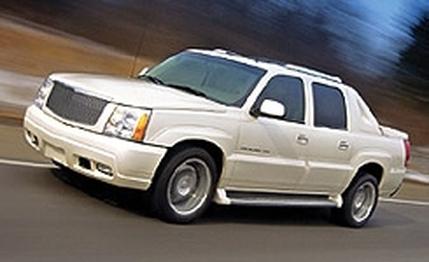
 Road Test
Road Test
We like numbers. Numbers are our friends. Numbers sing arias of irrefutable fact that soar above murky choruses of subjectivity, spin, and slant. Numbers can baby-sit our kids anytime.
So wrap your wetware around this number: 5724—as in pounds, as in curb weight for the Porsche Cayenne Turbo. This is almost exactly the weight of a GMC Yukon XL—a perimeter-frame four-by-four truck with a 12,000-pound towing capacity and 17.6 more inches of wheelbase than the unit-bodied Cayenne Turbo. This number—the weight of our test vehicle with all the fluids onboard—is approximately one Harley-Davidson Sportster more than we expected the Cayenne Turbo to weigh, based on the company's specifications. Around the office, many a jaw has gone oafishly slack at this imposing avoirdupois—and the jaw-slacking bar is set pretty high here.
Our scales, meanwhile, have quit to find easier work in the piano-moving business.
This number goes to the heart of the Cayenne conundrum: Why, when a statistically insignificant number of SUV owners ever venture off-road, would Porsche—a company that year in, year out builds the best sports cars in the world—burden the Cayenne with such silly amounts of heavy, hillock-humping capacity? Twenty-two-inch fording depth? More than 10 inches of ground clearance, courtesy of a ride-height-adjustable air suspension? A torque-multiplying low-range gear ratio and locking center and rear differentials?
This is not to quarrel with Porsche CEO Wendelin Wiedeking's decision, in 1998, to stick a Porsche-badged snout in the SUV trough. Nor is it to diminish, exactly, the Cayenne T's off-road abilities, which include leaping over felled trees in a single bound (it has an approach angle of 32.4 degrees and a departure angle of 27.3 degrees). But after 600 miles of mixed driving in the Cayenne Turbo—from Vanishing Point-style transits of upper Lower Michigan to plowing through dirty, smelly filth holes (the restaurants of upper Lower)—we have reached the conclusion that rather than digitally morph a Range Rover with a 911 Turbo, Porsche has created a vehicle that feels like a superb all-wheel-drive tourer with an elephant on its back.
Is it fast? Is Wiedeking hard to spell? The vehicle's quickness and speed (we recorded 0 to 60 mph in 5.0 seconds and a quarter-mile pass in 13.5 seconds) are stunning, but here numbers fail us; it's not the velocity per se but the giddy sensation of enormous mass being manhandled by oceanic force, like a tugboat thrown on the beach by a tsunami. The Cayenne reactor is a twin-turbo, quad-cam 4.5-liter V-8 with dry-sump and other fancy plumbing to keep it oily and cool in extreme off-roading. Thanks to its VarioCam intake-valve timing, the motor produces peak torque of 457 pound-feet between 2250 and 4750 rpm and a nice fat 450 horsepower at 6000 rpm. The soundtrack to all of this is a futuristic warbling of metallic timbre and menacing vibrato that makes The Matrix soundtrack seem like folk music.
An Aisin-supplied six-speed automatic transmission with Tiptronic override converts engine speed to driveshaft rotation with shaved-leg smoothness. Downstream of that is a planetary center differential that normally sends 62 percent of the go juice to the rear wheels, but using a multiplate clutch, the Porsche Traction Management system can shunt up to 100 percent of engine torque to whichever axle needs it.